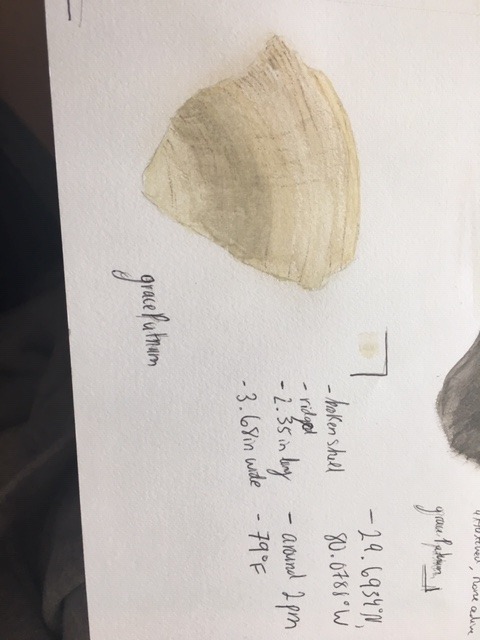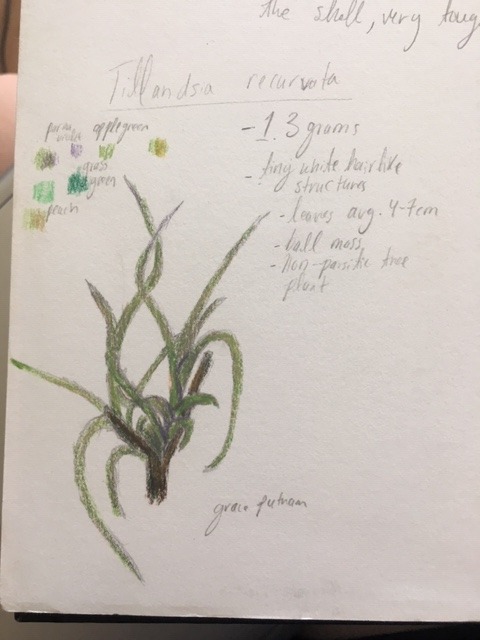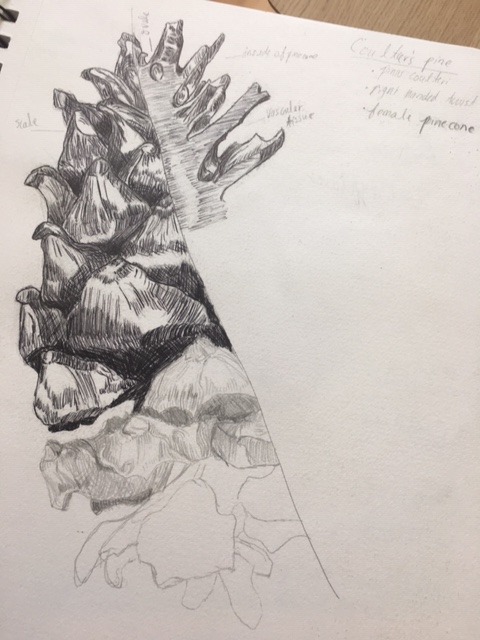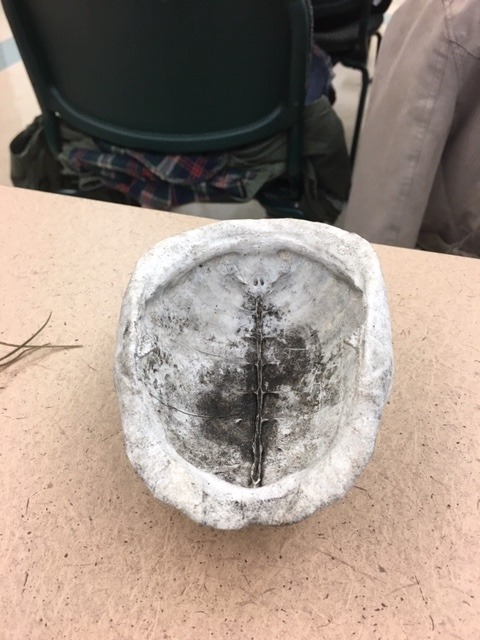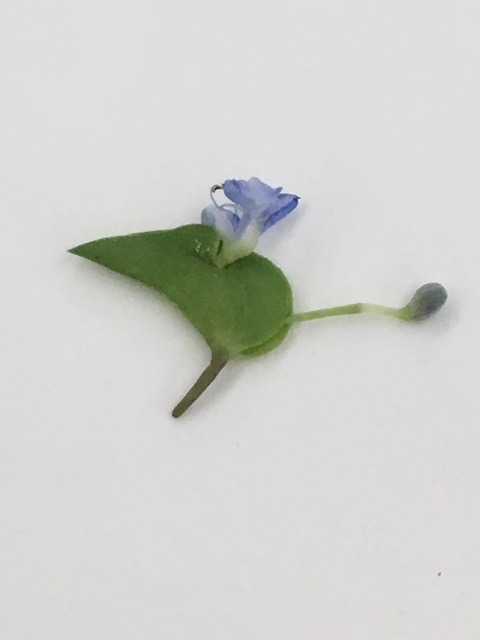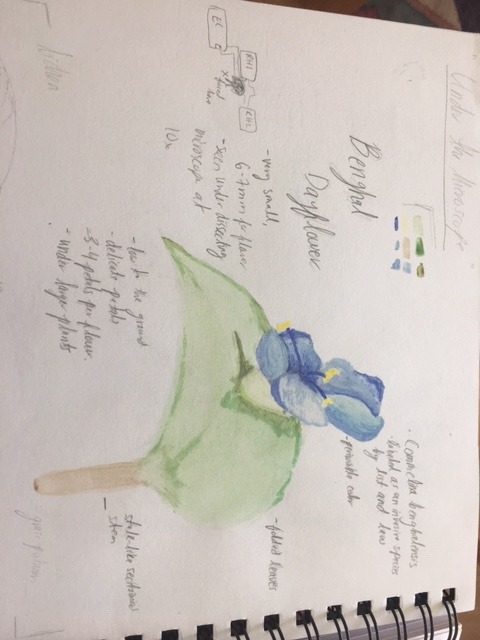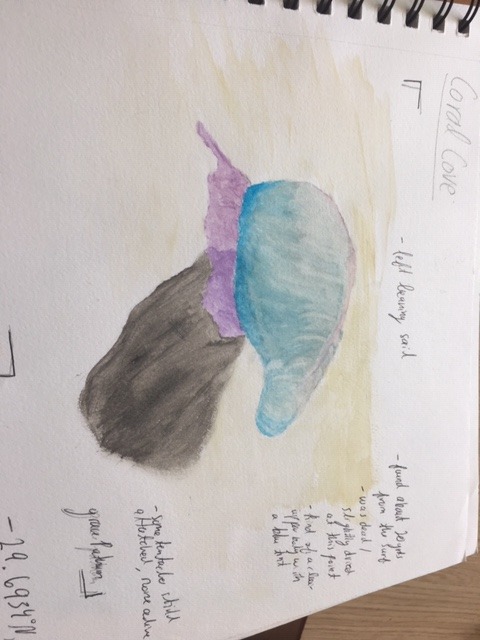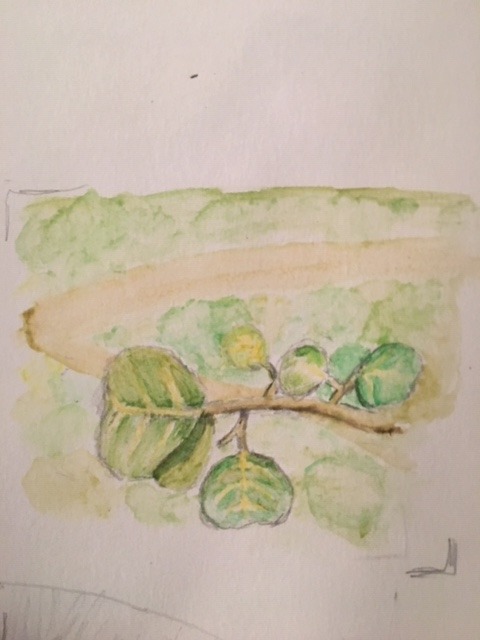Don't wanna be here? Send us removal request.
Text
Ball moss
This is commonly known as ball moss but the scientific name is Tillandsia recurvata, this specific species is actually, more specifically known as small ball moss. It was brought in by Dr. Moore who pulled it off of a tree outside. This is a small plant that lives on a larger plant. It has ‘scaley’ leaves that are usually two to six inches long. This is considered a native Florida airplant, that have been gaining popularity in the gardening community recently. It is also considered an epiphyte, because it uses a host plant for support.
I chose to use colored pencil to draw this because it is easier to layer colors and indicate texture at the same time with colored pencils, than it would be with water color, and graphite pencils do not indicate color at all. This plant just had such a unique texture and pretty color palette, that I knew that both were to important to pass up on one, so even though colored pencils are not my favorite medium, I decided to use them.
0 notes
Text
Box Turtle Shell
This is an old box turtle shell brought in to class by Dr. Moore. There are six different kinds of box turtles, and their genus is Terrapene. These turtles are native to North America, specifically the United States and Mexico. These turtles are usually 4-6in long. This particular shell was a little bit larger at 6 in long and the shell stood at about 3.5 in high, and it weighed 74.8 grams. This particular shell seemed very old but in good condition, except for a small exterior crack located on the outside of the shell but it did not reach the inside of the shell and could have occurred, while the animal was alive.
I chose to use a graphite set because the shell had very little color and I thought that the texture of the shell, especially the inside of it was more important, and would be easier and more accurately represent that in the piece.
0 notes
Text
Bengal Dayflower
This is the Bengal Dayflower, or the Commelina benghalensis, it is very small only about 6-7 mm across on the flower part. I drew it using a microscope and the camera lucida apparatus. It was found very low to the ground under the shade of a larger tree between the residence halls and the EC building. It is a very pretty periwinkle color and is very delicate. It is an invasive species originating from Asia, is actually classified as an herb, and also commonly referred to as the tropical spiderwart.
I used the camera lucida to draw the outline and get the general shape, curves, shading ect. I then went back later to fill in the colors with water color, because the color of this little periwinkle flower was a very important factor in its identification.
0 notes
Text
Portuguese Man of War
This is a Portuguese Man of War, or Physalia Physalis, and is and is Phylum Cnideria and class hydrozoa. Man of Wars floats are typically about one foot long by five inches wide and the tentacles are attached to the bottom of the float, and it is possible for the tentacles to get to be up to more that a hundred feet long, and are just dragged behind the float. Only the tentacles have cnidocytes, or stinging cells, meaning that the float can not sting you.
This particular one was about 7 in long by 3.5 inches wide, and was found about 20 meters from the surf, at coral cove in tequesta. I chose to use watercolor because these animals already look like they were painted with water colors, and I figured that it would give the most accurate representation.
0 notes
Text
Sea Grape
The Coccoloba uvifera is a small tree that is native to the coastal forest areas of Florida, it is commonly referred to as the Sea Grape due to its purple round fruits that vaguely resemble large grapes. At maturity these trees can reach heights of about 25 feet but not usually larger. They are very specially adapted to their beach side habitat using methods like leaf shielding, this plant has incredibly wide leaves which allows the leaves on the top of the plant to shield the lower ones from salt spray and the sun. The sea grape has white flowers and flowers any time of the year. This is a native Florida tree is prevalent in, around, and on many beaches throughout Florida and provides a vital part of our beach ecosystem. This particular tree was observed at Coral Cove on February 8, 2019 at around 3 pm eastern standard time. At coral cove there are a number of sea grape that are around the whole area they serve an important part of the marine forest ecosystem by holding together the sand with roots to prevent erosion and keep the beach dunes in place.
I decided to use pencil to do a true to size rendering of a sea grape leaf, and then a smaller watercolor of what the leaves look like on the branch and also to show the colors of the tree, and the leaves.
0 notes
Text
American Alligator
This is an american alligator or Alligator mississippiensis. This alligator was located about 20 feet from the boardwalk at Grassy Waters park, the northern most part of the Everglades, on March 1, 2019 at about 1:30pm. This particular alligator was probably only a juvenile based on the size, which was only about 2 feet long considering the fact that adults average 10-15 feet long. This little guy was in very shallow water probably only a foot or two deep, he also didn’t move very much, he mostly stayed still and when he moved, it was just to snap at the small fish, and was very quick, but went back to being still. Alligators can live up to 50 years and a group of alligator is referred to as a congregation.
I decided to render this drawing using pencil because it is easier to carry and work with just graphite in the field and since alligators aren’t particularly colorful i thought that the graphite would allow me to show shading and light, focusing on the texture of the scaley skin and less on the color.
0 notes
